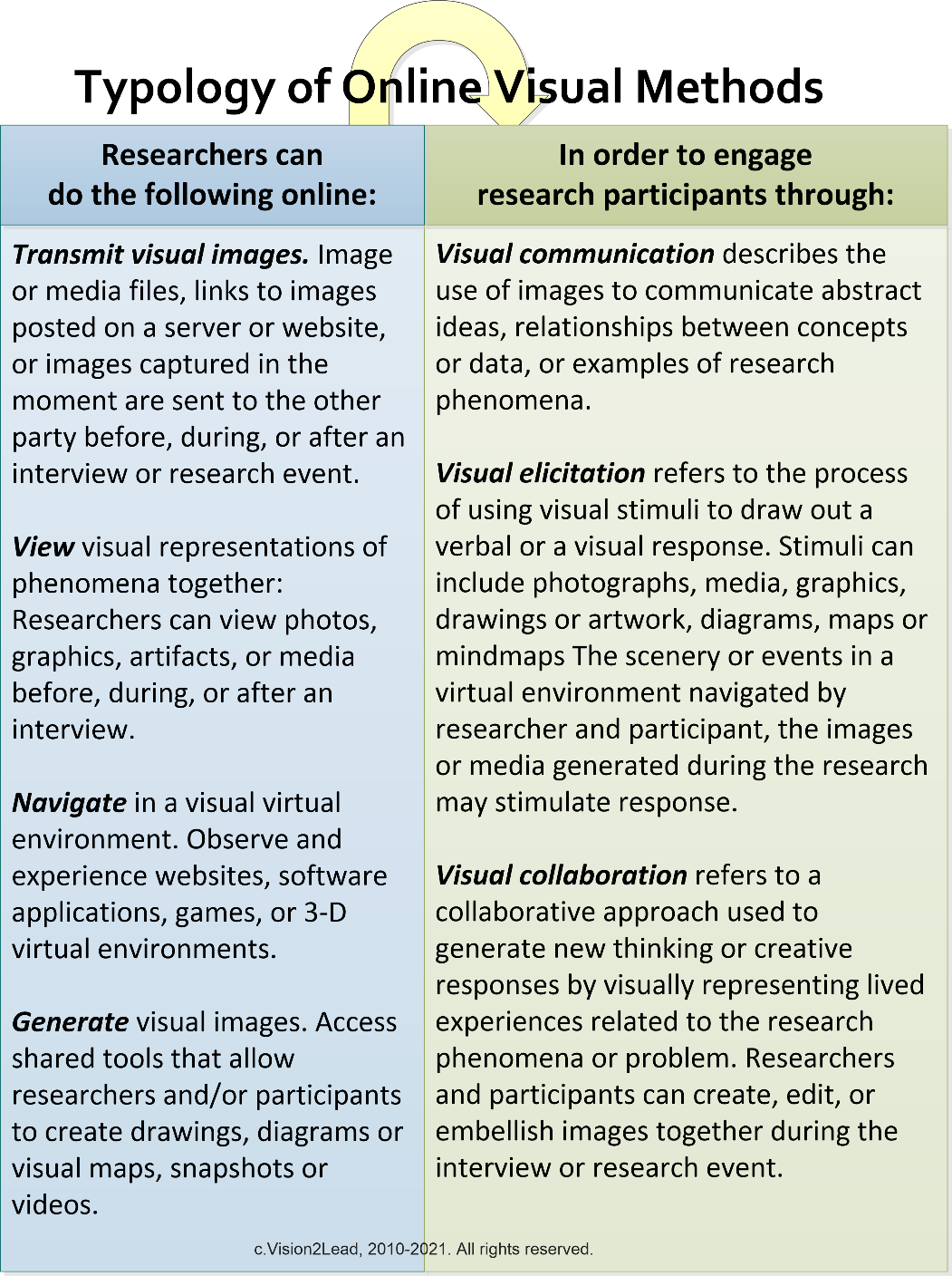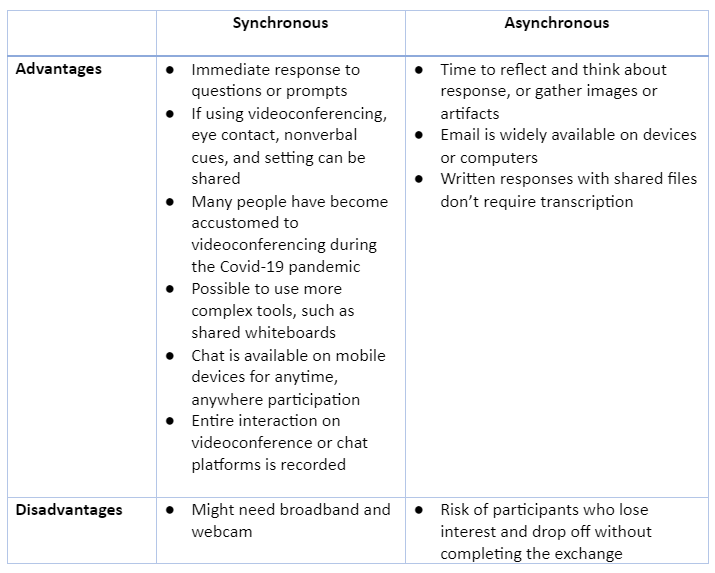Were you planning to interview people, only to find that in the Covid 19 era meeting in-person is no longer feasible? You were probably hoping to maximize the advantages of being present with the participant, such as the ability to:
- Make eye contact
- Read non-verbal cues
- See artefacts and items relevant to their experience with the problem you are studying
With careful planning, you can carry out visually-rich interviews online that include these important elements. I developed the Typology of Online Visual Methods (see below) to help researchers like you make the best use of technology tools. Before selecting the tools or platforms you want to use, think about the kinds of exchanges you want to have with participants, then select the medium that best suits your purpose. On the left side of this table, see the kinds of tasks we can carry out online. On the right side, see the research purpose you can achieve.

What kinds of tasks can I carry out with communications technology?
can easily transmit still images, media, or links by email or text message. We can view what we send each other privately or look at the images together. We can log into a game or application and see it together. We can use drawing or screenshot tools to create visuals. Throughout these tasks we can see each other, including our settings and any artefacts we want to share.
How can technology help me collect data?
Why would we transmit or view images, navigate an online milieu or generate images? We might simply want to communicate complex or abstract ideas in a succinct way, following the old adage about a picture being worth a thousand words. Or maybe we want the pictures to elicit words, to prompt or stimulate the conversation. As researchers, we might create a series of photographs or diagrams we use with all participants so we can collect responses to the same stimuli, or we might want to ask participants to share their own images to capture each of their unique experiences. Perhaps we want to use arts-based or creative methods to create images as part of the interview. Why not allow participants to draw or illustrate their answers instead of telling about their experiences with words?

What kind(s) of exchanges do you want to have with participants?
Many factors go into the decisions about how and what to do in an online interview, using what tools. Importantly, you want to choose options that your participants can easily access. Consider how you want to use images you collect and/or generate, and make sure you have the appropriate permissions or rights if you plan to illustrate an article or a presentation. But with those matters addressed, create a research event that engages participants, generates rich data, and includes a bit of fun!
Learn more on SAGE MethodSpace, or purchase Doing Qualitative Research Online.
AUTHOR BIO: Janet Salmons PhD is a free-range scholar, writer, coach, and artist through Vision2Lead. Areas of interest include emerging research methods, and teaching and collaborative learning in the digital age. Recent books are: Doing Qualitative Research Online 2nd edition (in press), What Kind of Researcher Are You? (2021), Reframing and Rethinking Collaboration in Higher Education and Beyond: A Practical Guide for Doctoral Students and Early Career Researchers with Narelle Lemon (2021), Publishing from your Doctoral Research: Create and Use a Publication Strategy with Helen Kara (2020), Learning to Collaborate, Collaborating to Learn (2019), Find the Theory in Your Research (2019), Getting Data Online (2019), and Doing Qualitative Research Online (2016). Janet is the Methods Guru and lead writer for SAGE Methodspace. She is an honorary member of the TAA Council of Fellows (2019) and received the Mike Keedy Award (2018) in recognition of enduring service to authors. She lives and works in the foothills of the Rocky Mountains in Boulder, Colorado.